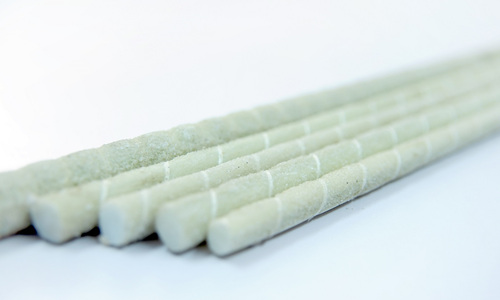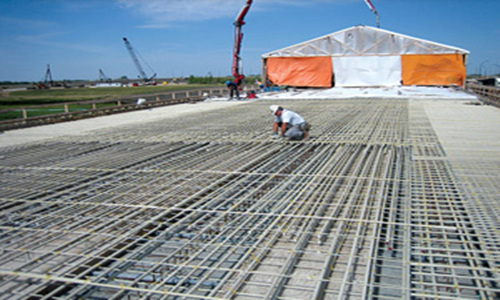Glass fiber reinforced rebar is a composite material made of glass fiber, synthetic resin, and an appropriate amount of auxiliary agents. It is currently the main composite rebar on the market.
FRP Rebar Advantages:
1.High Tensile Strength: the tensile strength is better than ordinary steel, and 20% higher than that of steel rebar of the same specification
2.Light Weight: only 1/4 of the same volume of steel rebar
3.Strong Corrosion Resistance: corrosion resistance of chemicals such as acids and alkalis
4.Strong Material Binding Force: the coefficient of thermal expansion is closer to cement than steel, therefore stronger binding force of FRP reinforcement and concrete.
5.Strong Designability: stable elastic modulus. Dimensional stability under thermal stress, bending and other shapes can be easily thermoformed; good safety performance, non-thermal, non-conductive, flame-retardant and anti-static
6.Strong Magnetic Permeability: FRP reinforcement is a non-magnetic material, and it is no need to demagnetize when using with non-magnetic or electromagnetic concrete components;
7.Convenient construction: Various standard and non-standard parts with different cross-sections and lengths can be produced according to user requirements. Non-metallic tension bands can be used for on-site binding, which is easy to operate.
Typical Applications of FRP Rebars:
1. Building cement structures such as building foundations, prefabs, garden columns, window terraces, handrails, sculptures, fountains
2. Cement structures exposed to seawater/fresh water, such as seaside dams, river dikes, basements, deep wells, etc.
3. Cement structures used in other corrosive environments such as water treatment plants, chemical plants, paper mills, petrochemical plants, liquefied gas plants, storage tank/cooling tower foundations, chimneys, electroplating plants, thermal power plants, nuclear power plants , food factories, etc.
4. Cement structures that require short-term reinforcement in tunnel/drilling exploration projects, such as tunnels, mines, etc.
5. Structures that are sensitive to weight, such as bridge surface, building exterior wall decorative panels, etc.
According to the surface of the rebar, it can be divided into a full-thread surface and a sand-coated (sandblasting) surface. Different surface forms of GFRP rebar have different binding strengths with concrete and can be selected according to customer requirements.
- sanded thread bar
- HB rebar






























